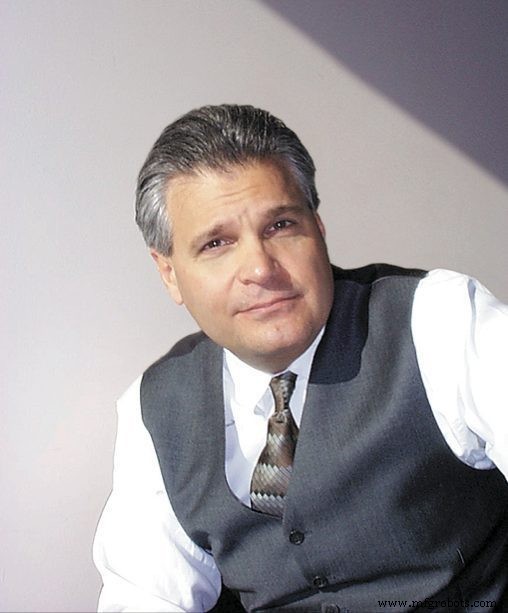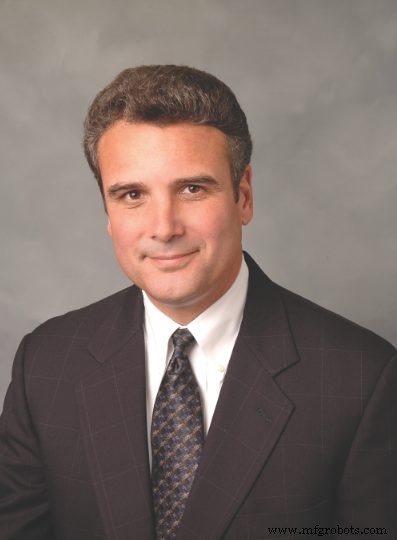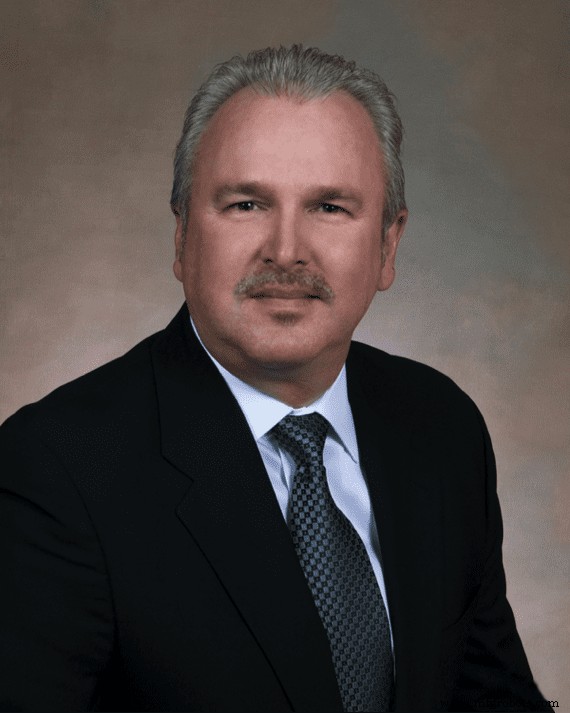산업기술








고객에게 다양한 제품과 서비스를 제공하는 사업에 종사하는 모든 회사의 경우, 어떤 상황에서도 서비스 수준을 항상 최고로 유지하는 데 도움이 되는 물류 전략을 구현하는 것은 해당 사업의 건강에 매우 중요합니다. 비즈니스 조직의 다른 영역에서 어떤 변화가 일어날 수 있는지. 이는 구조가 더 복잡하거나 공급망이 매우 유동적이거나 변동이 심한 회사, 특정 제품 라인, 특정 국가 또는 특정 고객을 수용해야 하는 회사의 경우 훨씬 더 중요합니다.
그러나 정확히 무엇 물류 전문가가 비즈니스 효율성을 높이는 데 집중해야 합니까? 생산 속도를 높이기 위해 구조적 개선 사항을 파악하는 데 더 많은 시간을 할애해야 합니까? 주로 물류 비용을 최소화하는 데 집중해야 합니까? 아니면 먼저 가장 높은 수준의 조직 목표를 식별하고 전체 물류 전략이 그 목표에 기여하는지 결정하는 데 더 집중해야 합니까? 어떤 전략이 어떤 상황에서 귀하의 비즈니스에 적합합니까?
귀하의 선택을 평가하고 새로운 아이디어를 제시하는 데 도움이 되도록 물류 전략 전문가 패널에게 다음 질문을 했습니다.
“물류 전략을 보다 효과적으로 만들거나 개선하려는 새로운 비즈니스(또는 기존 조직)에 대한 최고의 팁이나 아이디어는 무엇입니까?”
우리는 효과적인 물류 관리 전략에 대한 이 종합 가이드에 그들의 전문가 조언을 수집하고 편집했습니다. 귀사의 물류 자원을 극대화하고 궁극적으로 물류 전략을 한 단계 끌어올리는 데 도움이 되기를 바랍니다.

|
|
|
<시간>
 Shawn Casemore는 Casemore and Co, Inc.의 창립자이자 사장입니다. Shawn은 거의 20년 동안 다양한 산업 및 부문에서 팀을 이끌고 관리하며 동기를 부여해 왔습니다. 그는 Magna International, Arvin Meritor 및 Bruce Power LP를 비롯한 수십 개의 역동적이고 다양한 조직과 함께 일했습니다. Shawn은 운영 우수성 분야에서 선구자로 인정받고 있으며 그의 견해는 Globe and Mail, CFO Magazine, 오늘날 Enterprise Apps, B2B 구매 등을 비롯한 여러 업계 간행물에 자주 게재됩니다. Shawn은 또한 지난 2년 동안 Humber College Institute of Technology and Advanced Learning에서 방문 교수로 재직했습니다.
Shawn Casemore는 Casemore and Co, Inc.의 창립자이자 사장입니다. Shawn은 거의 20년 동안 다양한 산업 및 부문에서 팀을 이끌고 관리하며 동기를 부여해 왔습니다. 그는 Magna International, Arvin Meritor 및 Bruce Power LP를 비롯한 수십 개의 역동적이고 다양한 조직과 함께 일했습니다. Shawn은 운영 우수성 분야에서 선구자로 인정받고 있으며 그의 견해는 Globe and Mail, CFO Magazine, 오늘날 Enterprise Apps, B2B 구매 등을 비롯한 여러 업계 간행물에 자주 게재됩니다. Shawn은 또한 지난 2년 동안 Humber College Institute of Technology and Advanced Learning에서 방문 교수로 재직했습니다.
예상 수량을 활용하여 가격을 낮추십시오.
저는 사업을 시작하는 동안 물류 네트워크(FTL, LTL, 택배)를 개발하기 위해 여러 조직과 협력했습니다. 신뢰할 수 있는 역사적 볼륨이 없을 때 경쟁력 있는 가격으로 필요한 서비스 수준을 제공할 공급자를 찾는 것은 어려운 일입니다. 이것은 예측 볼륨이 필수가 되는 때입니다. 첫해에 LTL 또는 택배로 예상되는 물류량은 얼마입니까? 이것을 올바르게 배치하면 운임 비용을 크게 절감할 수 있으며, 그 결과 수익을 높이고 경쟁 우위를 확보하는 데 도움이 됩니다.
저는 한 아주 작은 세라믹 타일 유통업체가 택배 요금을 협상하는 것을 도왔습니다. 우리는 상당한 할인을 받은 최고 순위의 국제 택배를 이용하게 되었습니다. 내 고객은 만족했지만 어느 날 공급업체(타일의 더 큰 국내 제조업체)가 자신의 계정(동일한 택배로)을 사용하여 배송할 것을 제안할 때까지 할인율을 확인할 수 없었습니다. 나는 그들의 요율을 내 고객의 협상 요율과 비교하여 20%의 차이를 찾았습니다(내 고객에게 유리함).
물류 네트워크 전략에서 파트너를 식별하는 것은 실제 또는 예측된 레버리지에 관한 것입니다.
 Inbound Logistics Magazine 발행인 – 1981년부터 전 세계적으로 비즈니스 물류 및 공급망 관리자의 정보 요구 사항을 제공하는 멀티미디어 간행물 – Keith Biondo는 공급망의 선구자로 간주됩니다. 경력 초기에 Biondo는 미국 제조업체가 수요와 공급을 더 잘 맞추도록 돕는 것의 중요성을 인식했으며 이러한 아이디어에 대한 그의 열정은 Inbound Logistics의 많은 성과에 원동력이 되었습니다. Biondo의 주도 하에 인바운드 물류 제3자 물류 부문의 성장을 돕고 화주에게 3PL 제공업체 평가의 중요성을 가르쳤습니다. 그는 또한 가장 큰 ERP 시스템에서 가장 작은 SaaS 솔루션에 이르기까지 공급망 관리의 모든 측면에 물류 기술을 적용한다는 개념을 옹호했습니다. Biondo는 현재 American Society of Transportation and Logistics의 이사회 고문으로 활동하고 있습니다. Biondo는 뉴욕 세인트 존스 대학교에서 역사 및 영어 학사 학위를 취득했습니다.
Inbound Logistics Magazine 발행인 – 1981년부터 전 세계적으로 비즈니스 물류 및 공급망 관리자의 정보 요구 사항을 제공하는 멀티미디어 간행물 – Keith Biondo는 공급망의 선구자로 간주됩니다. 경력 초기에 Biondo는 미국 제조업체가 수요와 공급을 더 잘 맞추도록 돕는 것의 중요성을 인식했으며 이러한 아이디어에 대한 그의 열정은 Inbound Logistics의 많은 성과에 원동력이 되었습니다. Biondo의 주도 하에 인바운드 물류 제3자 물류 부문의 성장을 돕고 화주에게 3PL 제공업체 평가의 중요성을 가르쳤습니다. 그는 또한 가장 큰 ERP 시스템에서 가장 작은 SaaS 솔루션에 이르기까지 공급망 관리의 모든 측면에 물류 기술을 적용한다는 개념을 옹호했습니다. Biondo는 현재 American Society of Transportation and Logistics의 이사회 고문으로 활동하고 있습니다. Biondo는 뉴욕 세인트 존스 대학교에서 역사 및 영어 학사 학위를 취득했습니다.
한 가지 팁은 수요 기반 물류를 아직 실행하지 않았다면 시작하는 것입니다.
제품에 대한 수요를 공급에 더 잘 맞추는 것의 중요성은 운송 비용을 줄이는 것보다 훨씬 더 중요합니다.
회사의 경우 인바운드 물류 또는 수요 기반 물류를 실행하기 시작하면 운송 비용은 절감되지만 재고를 정보로 대체하여 절약하고 고객에게 더 나은 고객 서비스를 제공하는 것이 훨씬 더 중요합니다.
그 중요한 결과 외에도 수요 기반 물류를 실행하면 물류 관리가 기능적 사일로에서 벗어나 전체 기업에 전략적 이점을 제공할 수 있습니다.
Inbound Logistics Magazine을 구독하여 프로젝트를 시작할 때 도움과 지원을 제공하는 예제, 사례 기록 및 모범 사례를 확인하세요. 수요 중심의 물류 여정.
 Steve Murray는 공급망 비전의 수석 컨설턴트이자 수석 연구원이라는 독특한 역할을 맡고 있습니다. Supply Chain Visions의 연구 책임자인 Steve는 Supply Chain Visions가 고객에게 제공할 수 있는 최첨단 트렌드와 모범 사례에 대해 공급망 산업의 흐름을 지속적으로 모니터링하고 있습니다.
Steve Murray는 공급망 비전의 수석 컨설턴트이자 수석 연구원이라는 독특한 역할을 맡고 있습니다. Supply Chain Visions의 연구 책임자인 Steve는 Supply Chain Visions가 고객에게 제공할 수 있는 최첨단 트렌드와 모범 사례에 대해 공급망 산업의 흐름을 지속적으로 모니터링하고 있습니다.
Steve는 SC Visions “Catalog of 프로세스 및 모범 사례” – 공급망 관리 위원회의 공급망 관리 프로세스 표준 가이드와 창고 교육 및 연구 위원회의 모범 사례 가이드의 기초이며 SC Visions / CSCMP Glossary of Supply Chain Management and Logistics를 관리합니다. 자귀. Steve는 DC 메트릭에 대한 연례 WERC/DC 속도 연구를 수행하는 팀의 일원이기도 하며, 프로세스 개선 및 메트릭 사용 주제에 대해 자주 연설합니다.
창고 및 공급망 분야의 회사에서 컨설턴트로 수년간 일한 경험이 있습니다. 이는 너무 자주 간과되거나 잘못 이해되거나 제대로 실행되지 않는 다소 간단하고 매우 효과적인 접근 방식입니다.
신규 및 기존 회사는 시간을 들여 영업 및 운영 계획의 본질을 이해해야 합니다. 나> 또는 S&OP. S&OP를 안다고 "생각"하는 회사와 실제로 이름을 지정하지 않고 S&OP의 한 형태를 실행하는 회사를 여러 번 봅니다. 하지만 이를 효과적으로 실행하는 회사는 많지 않습니다.
S&OP는 단순히 정의된 모든 주요 기능(영업, 마케팅, 제품 관리, 제조, 창고 보관, 조달, 재무, 운송)이 비즈니스는 비즈니스 활동을 검토, 토론 및 계획하기 위해 팀(대면 또는 커뮤니케이션 링크를 통해)으로 모입니다. 여기에는 단순히 영업 및 운영이 포함되는 것이 아니라 비즈니스의 정규 활동에 영향을 미치거나 영향을 받는 모든 당사자가 포함되어야 합니다.
이 세션은 모든 것이 포함된 "팀" 노력으로 간주되어야 합니다. 공통의 목표(고객 만족도, 수익성, 판매 향상 등)를 이해하고 이러한 목표를 달성하기 위해 함께 일하기로 동의합니다. 회의는 가능한 한 자주 개최해야 하며 팀에는 정기적인 점검 및 알림을 지원하는 일련의 도구, KPI 및 보고서가 있어야 합니다. 회의는 집중적이고 짧고 협력에 관한 것이어야 하며 대립을 엄격히 피해야 합니다. 예, 무엇이 잘못되었는지 논의할 것이지만 개선의 "이유"와 "방법"과 문제 제거에 중점을 둡니다. 장단기적으로 닥칠 일과 팀이 이를 어떻게 해결할 것인지에 대한 계획이 더 중요해야 합니다.
회사를 계속 괴롭히는 기능적 사일로를 넘어서려는 모든 당사자의 약속이 있어야 합니다. 시간이 지나면서 기업 문화의 뿌리 깊은 구성 요소가 되어야 합니다.
제대로 실행되는 견고한 S&OP 프로세스는 성공 확률을 높이는 다른 단일 물류 전략보다 더 많은 일을 할 수 있습니다. "팀"이 동기화되면 개별 기능 영역은 목표가 무엇인지 완전히 이해하고 프로세스의 일부를 가장 효과적으로 처리하는 방법에 집중할 수 있습니다.
S&OP가 없으면 대부분의 기능이 자신의 목표를 만들지만 나머지 비즈니스와 일치하지 않을 가능성이 높습니다. 예를 들어; 고객 주문에 대해 높은 채우기 비율을 달성하는 DC는 비즈니스의 나머지 부분에 높은 비용을 초래하는 경우 비즈니스에 좋지 않을 수 있습니다. S&OP는 모든 물류 관련 활동이 가장 경제적이고 효율적인 방식으로 가능한 가장 높은 충진율을 얻을 수 있도록 조정될 수 있습니다.
 Rick D. Blasgen은 현재 CSCMP(Council of Supply Chain Management Professionals)의 회장 겸 CEO로 재직 중입니다. ) 미국 일리노이주 롬바드에서 그는 Nabisco에서 경력을 시작하여 재고 관리, 주문 처리, 운송 및 유통 센터 운영 관리에서 책임이 증가하는 다양한 물류 직책을 맡았습니다. 그는 1998년 Nabisco에서 공급망 부사장이 되었고, 2002년에는 Kraft의 공급망 부사장이 되었습니다. 2003년부터 2005년까지 ConAgra Foods에서 통합 물류 수석 부사장으로 재직했습니다. 그는 Governors State University에서 경영학 학위를 받았습니다.
Rick D. Blasgen은 현재 CSCMP(Council of Supply Chain Management Professionals)의 회장 겸 CEO로 재직 중입니다. ) 미국 일리노이주 롬바드에서 그는 Nabisco에서 경력을 시작하여 재고 관리, 주문 처리, 운송 및 유통 센터 운영 관리에서 책임이 증가하는 다양한 물류 직책을 맡았습니다. 그는 1998년 Nabisco에서 공급망 부사장이 되었고, 2002년에는 Kraft의 공급망 부사장이 되었습니다. 2003년부터 2005년까지 ConAgra Foods에서 통합 물류 수석 부사장으로 재직했습니다. 그는 Governors State University에서 경영학 학위를 받았습니다.
제 최고의 팁은 대인 관계 기술이 뛰어나고 물류/공급망 세계와 잘 연결되어 있고(물론 CSCMP 회원입니다!) 검증된 리더이며 견고한 재정 통찰력을 갖춘 경험 많은 물류 전문가를 구하는 것입니다.
<시간>
 Richard Wilding은 Cranfield School of Management의 공급망 전략 교수입니다. 영국 Cranfield School of Management UK의 물류 및 공급망 관리 센터에서 공급망 전략의 의장(정교수)으로서 Richard는 제약, 소매, 자동차, 하이테크를 포함한 모든 분야의 물류 및 공급망 프로젝트에서 유럽 및 국제 기업과 협력하고 있습니다. 기술, 음식, 음료 및 전문 서비스를 예로 들 수 있습니다. 그는 높은 평가를 받고 있는 발표자이며 정기적으로 산업 컨퍼런스에서 연설을 하고 있으며 지역 대학 및 산업 연합의 초청으로 유럽과 아시아에서 강의 투어를 진행했습니다. 그는 공급망 관리 분야에서 널리 출판되었으며 이 분야의 여러 최고 저널의 편집 고문입니다.
Richard Wilding은 Cranfield School of Management의 공급망 전략 교수입니다. 영국 Cranfield School of Management UK의 물류 및 공급망 관리 센터에서 공급망 전략의 의장(정교수)으로서 Richard는 제약, 소매, 자동차, 하이테크를 포함한 모든 분야의 물류 및 공급망 프로젝트에서 유럽 및 국제 기업과 협력하고 있습니다. 기술, 음식, 음료 및 전문 서비스를 예로 들 수 있습니다. 그는 높은 평가를 받고 있는 발표자이며 정기적으로 산업 컨퍼런스에서 연설을 하고 있으며 지역 대학 및 산업 연합의 초청으로 유럽과 아시아에서 강의 투어를 진행했습니다. 그는 공급망 관리 분야에서 널리 출판되었으며 이 분야의 여러 최고 저널의 편집 고문입니다.
귀하의 질문에 대한 답변은 YouTube의 공급망 전략 동영상 60초에 포함되어 있습니다.
60초 동영상의 일부 참고 사항:
물류 및 공급망 전략은 운영으로 요약할 수 있습니다. 비즈니스 미션의 실행.
그러므로 먼저 비즈니스 미션을 이해하고 조직의 기업 전략을 반영하고 그에 따라 계획하십시오. 둘째, "평균적인" 공급망은 고객의 50%가 귀하의 서비스에 질려 있고 50%는 많은 비용을 지출하고 있음을 의미합니다! 집중적인 경쟁 전략이 필요하므로 귀사의 마케팅 및 영업 부서와 연락하고 논의하십시오. 따라서 개별 공급망을 개발하여 이러한 각 그룹에 대해 가능한 한 가장 낮은 비용으로 최대 가치를 창출할 수 있도록 고객과 제품을 세분화해야 합니다. 셋째, 이제 공급망 전략이 실제로 작동하려면 4가지 영역을 설계해야 합니다.
공급망 프로세스, 시설 위치 및 사용 장비를 포함한 공급망 인프라, 공급망 정보 시스템, 마지막으로 공급망 조직입니다. 이것이 직원을 조직하는 방법입니다.
요약하면 기업 전략부터 시작하여 다양한 시장에서 경쟁하는 방법을 식별하고 경쟁 전략을 이해하고 공급망 프로세스를 맞춤화하여 이러한 시장에 서비스를 제공할 공급망 전략을 개발합니다. , 인프라, 정보 시스템 및 조직 및 사람.
 Ken Ackerman은 전체 경력 동안 물류 및 창고 관리 분야에서 활동했습니다. 컨설팅 분야에 뛰어들기 전에 그는 현재 Exel Logistics USA의 일부가 된 공공 창고 회사인 Distribution Centers, Inc.의 CEO였습니다. 1980년 Ackerman은 회사를 매각하고 Coopers &Lybrand의 경영 컨설팅 부서에 합류했습니다. 1981년에 그는 경영 자문 서비스인 Ackerman Company를 설립했습니다.
Ken Ackerman은 전체 경력 동안 물류 및 창고 관리 분야에서 활동했습니다. 컨설팅 분야에 뛰어들기 전에 그는 현재 Exel Logistics USA의 일부가 된 공공 창고 회사인 Distribution Centers, Inc.의 CEO였습니다. 1980년 Ackerman은 회사를 매각하고 Coopers &Lybrand의 경영 컨설팅 부서에 합류했습니다. 1981년에 그는 경영 자문 서비스인 Ackerman Company를 설립했습니다.
Ken은 Warehousing Forum의 편집자이자 발행인입니다. , 월간 구독 뉴스레터 및 블로그. 그의 최신 책은 린 창고입니다. 및 공급망 관리의 기초 , 둘 다 2007년에 출판되었습니다. 그의 다른 최근 출판물에는 Auditing Warehouse Performance가 있습니다. 및 창고 정보 . Harvard Business Review는 Bernard J. LaLonde 교수와 공동 저술한 "Making Warehousing More Efficient"를 출판했습니다. New York Times는 자신의 기사 "Just In Time, Right For Retail"을 게시했습니다. 그는 창고 및 관리를 다루는 다른 수많은 기사의 저자입니다.
그는 다음과 같은 교육 및 전문 자격을 보유하고 있습니다.
항상 기업 전략에 종속되어야 합니다. 예:
 Steve Novak은 PPR Management Services, LLC의 사장으로 조직과 협력하여 목표를 정의하고 달성합니다. . 그는 20년 이상의 프로세스 개선 및 비즈니스 운영 경험을 보유하고 있으며 "The Small Manufacturer's Toolkit"의 저자입니다.
Steve Novak은 PPR Management Services, LLC의 사장으로 조직과 협력하여 목표를 정의하고 달성합니다. . 그는 20년 이상의 프로세스 개선 및 비즈니스 운영 경험을 보유하고 있으며 "The Small Manufacturer's Toolkit"의 저자입니다.
먼저 달성하려는 목표, 달성하려는 목표를 정의하십시오. 물류/공급망 전략은 비즈니스 목표를 지원하므로 공급망 전략은 조직의 목표와 일치하고 이를 달성하는 데 도움이 되어야 합니다. 두 번째 단계는 더 높은 수준의 목표를 달성하기 위해 공급망 전략이 작동하는 방식을 명확히 하는 것입니다.
예를 들어, 시장 출시 속도가 목표인 경우 공급망 전략은 목표가 목표가 되는 것과는 다르게 보일 것입니다. 저가 공급자.
 Tim Garcia는 선도적인 물류 및 공급망 관리 소프트웨어 솔루션 제공업체인 Apptricity의 설립자이자 CEO입니다. Tim은 엔터프라이즈 애플리케이션 시장에서 25년 이상의 소프트웨어 판매, 관리 및 개발 경험을 Apptricity에 제공하고 그의 리더십 하에 Apptricity의 성장하는 고객 기반에는 현재 Walmart Stores, AT&T 및 Department of Defense와 같은 세계 최대 조직 3곳이 포함되어 있습니다. . Apptricity 이전에 Garcia는 Pivotal Corporation(Nasdaq:PVTL), Compuware Corporation(Nasdaq:CPWR), Peregrine Systems(NYSE:HPQ), Sterling Software(NYSE:CA) 및 EDS(NYSE:HPQ)에서 관리직을 역임했습니다. 그는 University of California at Davis에서 경제학 학사 학위를 받았습니다.
Tim Garcia는 선도적인 물류 및 공급망 관리 소프트웨어 솔루션 제공업체인 Apptricity의 설립자이자 CEO입니다. Tim은 엔터프라이즈 애플리케이션 시장에서 25년 이상의 소프트웨어 판매, 관리 및 개발 경험을 Apptricity에 제공하고 그의 리더십 하에 Apptricity의 성장하는 고객 기반에는 현재 Walmart Stores, AT&T 및 Department of Defense와 같은 세계 최대 조직 3곳이 포함되어 있습니다. . Apptricity 이전에 Garcia는 Pivotal Corporation(Nasdaq:PVTL), Compuware Corporation(Nasdaq:CPWR), Peregrine Systems(NYSE:HPQ), Sterling Software(NYSE:CA) 및 EDS(NYSE:HPQ)에서 관리직을 역임했습니다. 그는 University of California at Davis에서 경제학 학사 학위를 받았습니다.
오늘날의 초고속 온라인 환경에서는 고객의 기대치를 충족시키는 것이 매우 중요합니다. 제품을 보다 빠르고 효율적으로 처리하는 방법을 찾는 것은 성공적인 조직을 지원하는 데 중요하며 잘 운영되는 공급망은 비즈니스의 성공에 매우 중요합니다. 우수한 솔루션으로 시작하거나 공급망 관리 시스템을 업그레이드하는 것은 경쟁을 위해 필수적이며 생산성을 크게 높일 수 있습니다. 공급망 중단의 가능성은 예상치 못한 날씨, 자연 재해, 정치적 격변, 경제 위기 및 기타 "블랙 스완" 또는 신생 기업을 망치고 기존 비즈니스를 손상시킬 수 있는 독특한 사건에서 비롯됩니다.
완화에 있어 가장 중요한 팁 공급망 중단의 잠재적인 부정적인 결과는 효과적이고 신중한 사전 계획을 수행하는 것입니다. 벤자민 프랭클린은 “1온스의 예방은 1파운드의 치료 가치가 있다”고 말했습니다. 이 견적은 공급망 물류에 절대적으로 적용됩니다. 각 회사는 제품에 특별한 "지문"을 가지고 있습니다. 일부는 부패에 민감하고 일부는 깨지기 쉬운 전자 제품이며 다른 일부는 더 많은 인력이 필요합니다. 신속하고 단호하게 대응하기 위해서는 올바른 솔루션이 지원하는 계획이 조직에 매우 중요합니다. 전 세계의 다른 지역에 위치한 기업, 공급업체 및 제조업체와 함께 일관성을 제공하고 프로세스를 간소화하며 가시성을 향상시켜 실시간으로 문제를 해결하는 방식으로 모든 사람을 연결할 수 있는 기술이 필요합니다. 비즈니스는 공급망만큼만 성공합니다. 지금 미리 계획하고 이를 현재 조직의 경영진으로 승격하면 내일 대부분의 고객 서비스 문제를 해결할 수 있습니다.
오늘날의 혼란스럽고 불확실한 시장에서 올바른 솔루션을 찾는 것이 판도를 바꿀 수 있습니다. 잠재적인 문제는 잘못 관리된 창고 프로세스, 부적절하게 추적된 차량 및 재고, 분산된 재고, 불충분한 운송 관리 또는 기타 공급망 문제에 있습니다. 많은 부분이 인력의 잠재력을 극대화하는 데 중점을 두었습니다. 배송물을 받고 이동하는 데 도움이 되는 인력이 줄어들면 정확성과 속도가 더욱 중요해집니다. 이는 식품, 음료 또는 냉장 유통과 관련된 모든 것과 같이 부패하기 쉽고 시간에 민감한 제품을 다루는 조직에 밀접하게 적용됩니다. 이러한 조직 내에서는 선적을 주의 깊게 추적하는 것이 필수적입니다.
많은 조직에서 여전히 이러한 종류의 정보에 대해 "부족의 지식"에 의존하지만 최고의 기억조차도 실패합니다. 수동 프로세스는 오류가 발생하는 경향이 있지만 정보를 중앙 집중화하고 공급망을 자동화하는 데 도움이 되는 시스템은 일정 수준의 지원과 정보에 대한 실시간 액세스를 제공하여 기업이 최소한의 시간 투자, 계획 및 솔루션 구현으로 최대의 잠재력을 달성하도록 도울 수 있습니다.
차량 관리 소프트웨어를 사용하여 회사 차량을 구체화하거나 재고 관리 솔루션을 통해 제품을 면밀히 모니터링하거나 개선된 창고 관리로 모든 공간을 최대화하는 등 혁신을 통한 미래 계획은 핵심입니다. 솔루션이 데이터를 중앙 집중화하고 사무실에 있든, 거리에 있든, 멀리 떨어진 여러 대륙에 있든 알아야 하는 정보에 실시간으로 액세스할 수 있게 되면서 혁신이 시장을 강타하고 있습니다.
기술은 공급업체를 고객 및 고객과 연결하고 있습니다. 경쟁업체보다 앞서 비즈니스를 설정하는 일종의 빠르고 적응 가능한 응답을 촉진하는 상호 연결된 웹을 통해 화주에게 제공됩니다. 오늘날의 물류는 모바일을 지원하고 연결되어 있으며 과거의 연필과 클립보드 스타일의 관리보다 훨씬 더 많은 것을 필요로 합니다. 구글 CEO 에릭 슈미트(Eric Schmidt)는 이제 세계는 역사의 시작부터 2003년까지 인류의 모든 문명이 생산한 양의 데이터를 48시간 동안 생성한다고 말했습니다. 비즈니스를 더 잘 이해하고 추진하기 위해 빅 데이터를 계획하고 활용한다는 것은 지속 가능한 미래.
 Clay Gentry는 물류 운영 담당 부사장으로서 혁신적인 TMS 기술 개발 및 Transportation Insight 고객의 프로세스 개선을 책임지고 있습니다. 북미 최고의 3PL. 그는 비자산 기반 물류 관리 분야에서 10년 이상의 경험을 가지고 있습니다. 고객과의 계약에는 운송 계획 및 프로세스 관리, 엔지니어링, 지속적인 개선, 운송 관리 시스템(TMS) 프로세스 설계 및 통합이 포함됩니다.
Clay Gentry는 물류 운영 담당 부사장으로서 혁신적인 TMS 기술 개발 및 Transportation Insight 고객의 프로세스 개선을 책임지고 있습니다. 북미 최고의 3PL. 그는 비자산 기반 물류 관리 분야에서 10년 이상의 경험을 가지고 있습니다. 고객과의 계약에는 운송 계획 및 프로세스 관리, 엔지니어링, 지속적인 개선, 운송 관리 시스템(TMS) 프로세스 설계 및 통합이 포함됩니다.
물류 전략은 서비스 수준 목표를 달성하면서 시장에 상품을 배포하는 가장 비용 효율적인 방법론을 평가하는 과학입니다. 효과적인 물류 전략을 수립할 때 물류가 귀사와 고객의 운영에 어느 정도 영향을 미치는지 이해해야 합니다. 인바운드 및 아웃바운드 배송에 적시에 배송하는 것이 얼마나 중요한지, 예산, 리소스 및 기존 제공업체 네트워크와 같은 제약 조건은 무엇입니까? 물류 운영을 아웃소싱하기로 선택한 경우, 귀하와 협력하여 물류를 공동 관리할 조직을 사용하여 모든 최전선 운송업체 관계와 통제력을 유지할 수 있도록 하십시오. 당신을 "프로젝트"로 보지 않고 모범 사례와 새로운 트렌드에 대한 이해를 공유할 "파트너"로 보는 조직과 협력하십시오. 이러한 파트너십 유형의 관계는 물류 운영의 성공을 보장합니다.
<시간>
 Samuel Levin은 MavenWire LCC의 공동 창립자이자 전무 이사입니다. MavenWire LLC를 공동 설립하기 전에 Samuel은 기술 컨설턴트, 수석 기능 컨설턴트 및 프로젝트 관리자를 포함하여 G-Log Inc.(Global Logistics Technologies, 2005년 Oracle Corporation에 인수됨)에서 다양한 역할을 수행했습니다. G-Log의 수상 경력에 빛나는 GC3 공급망 관리 솔루션을 구현하는 동안 Samuel은 CPG, 자동차, 3PL/4PL, 제조 및 국제 화물 운송을 포함한 거의 모든 물류 분야에서 일할 수 있는 기회를 얻었습니다.
Samuel Levin은 MavenWire LCC의 공동 창립자이자 전무 이사입니다. MavenWire LLC를 공동 설립하기 전에 Samuel은 기술 컨설턴트, 수석 기능 컨설턴트 및 프로젝트 관리자를 포함하여 G-Log Inc.(Global Logistics Technologies, 2005년 Oracle Corporation에 인수됨)에서 다양한 역할을 수행했습니다. G-Log의 수상 경력에 빛나는 GC3 공급망 관리 솔루션을 구현하는 동안 Samuel은 CPG, 자동차, 3PL/4PL, 제조 및 국제 화물 운송을 포함한 거의 모든 물류 분야에서 일할 수 있는 기회를 얻었습니다.
당신의 역량에 집중하세요. 많은 기업이 물류와 관련하여 "모든 것을 수행"해야 한다고 생각하지만 실제로는 효과적이고 효율적인 물류 프로세스를 개발하려는 조직에서 사용할 수 있는 옵션이 많이 있습니다. 예를 들어 독자의 배송 요구 사항의 복잡성에 따라 경우에 따라 국내 물류를 3PL 또는 글로벌 화물 운송업체에 아웃소싱하는 것이 더 쉬울 수 있습니다. 그리고 IT 부서가 없는 스타트업이라도 저렴한 SaaS 기반 운송 관리 솔루션(TMS)을 사용하여 효과적인 물류 전략을 세울 수 있습니다. 이러한 플랫폼을 통해 조직은 소프트웨어 애플리케이션 및 컴퓨터 하드웨어 관리에 대한 걱정 없이 화물을 계획, 실행 및 추적할 수 있습니다.
 Raad Mobrem은 자신이 처음으로 내부 솔루션으로 만든 Lettuce의 CEO이자 공동 창립자입니다. 도매 중소기업. Raad의 회사가 제품을 사용하는 것을 본 후 다른 도매 비즈니스의 엄청난 수요를 얻은 Lettuce는 CTO Frank Jones의 도움으로 2012년 초에 출시되었습니다. Raad는 Lettuce의 제품과 회사의 선구자로서 기업이 회사를 더 쉽게 운영할 수 있도록 하는 소비자와 유사한 비즈니스 애플리케이션을 만드는 데 중점을 두고 있습니다.
Raad Mobrem은 자신이 처음으로 내부 솔루션으로 만든 Lettuce의 CEO이자 공동 창립자입니다. 도매 중소기업. Raad의 회사가 제품을 사용하는 것을 본 후 다른 도매 비즈니스의 엄청난 수요를 얻은 Lettuce는 CTO Frank Jones의 도움으로 2012년 초에 출시되었습니다. Raad는 Lettuce의 제품과 회사의 선구자로서 기업이 회사를 더 쉽게 운영할 수 있도록 하는 소비자와 유사한 비즈니스 애플리케이션을 만드는 데 중점을 두고 있습니다.
사용 가능한 기술을 활용합니다. 제가 소유한 회사인 Lettuce는 전체 판매, 처리, 회계, 재고, 예측, 이행 및 배송 프로세스를 단 하나의 버튼 클릭으로 통합하여 소기업 소유자가 비용을 절감할 수 있는 방법을 혁신했습니다. 여러 부서에 걸친 작업을 클릭 한 번으로 변환했습니다.
이와 같은 도구는 물류 프로세스를 극대화하는 데 필수적이라고 생각합니다. Lettuce는 웹 포털 및 iPad 앱을 통해 액세스할 수 있는 재고 관리 프로그램으로, 중개인을 제거하고 반복적인 데이터 입력을 제거하여 간접비를 절감하여 기업의 비용을 절감하고 영업 사원이 그렇지 않기 때문에 더 많은 판매를 확보할 수 있게 하여 더 많은 이익을 가져옵니다 백엔드 주문 처리로 시간 낭비. 물론 전통적인 판매 방식인 펜과 종이를 아이패드로 대체함으로써 (상추와 같은) 소규모 기업이 좀 더 친환경적으로 발전하는 데 도움이 됩니다. 회사는 이 앱을 활용하여 즉석 디지털 카탈로그를 만들고, 그 자리에서 신용 카드 정보를 확인하고(무역 박람회에 적합), 배송료를 계산하고, QuickBooks와 동기화하고, 재고 요구 사항을 예측하고, 도매업자에게 연중무휴 액세스 및 주문 기능을 제공하여 수많은 시간을 절약할 수 있습니다. 백엔드 이행 프로세스에서 벗어납니다.
 McKay는 MJMcKay Consulting Corporation의 CEO입니다. 그는 1990년대 초 Boeing Company에서 회사의 중간 관리를 위한 린 제조 커리큘럼을 만들도록 요청한 최초의 학자 중 한 명이었습니다. 그가 만든 교육은 이후 수천 명의 참가자에게 Lean을 가르치는 데 사용되었습니다. 그는 또한 Microsoft Corporation, Starbucks 및 Pfizer와 같은 거대 기업의 성장 기회를 발견하는 데 시간을 보냈습니다. 그는 정부 기관, NGO, 서비스 기관 및 제조업체와 협력했습니다. 그는 가족 소유 비즈니스의 특히 고유한 문제를 성공적으로 해결한 상당한 경험이 있습니다.
McKay는 MJMcKay Consulting Corporation의 CEO입니다. 그는 1990년대 초 Boeing Company에서 회사의 중간 관리를 위한 린 제조 커리큘럼을 만들도록 요청한 최초의 학자 중 한 명이었습니다. 그가 만든 교육은 이후 수천 명의 참가자에게 Lean을 가르치는 데 사용되었습니다. 그는 또한 Microsoft Corporation, Starbucks 및 Pfizer와 같은 거대 기업의 성장 기회를 발견하는 데 시간을 보냈습니다. 그는 정부 기관, NGO, 서비스 기관 및 제조업체와 협력했습니다. 그는 가족 소유 비즈니스의 특히 고유한 문제를 성공적으로 해결한 상당한 경험이 있습니다.
결정을 내려놓으세요.
3PL을 사용하거나 어떤 식으로든 물류를 반드시 아웃소싱해야 한다는 의미는 아니지만, 회사의 임원이라면 아무리 작더라도 계획을 세워야 합니다. 이제 의도적으로 물류 의사 결정에서 멀리 떨어져 있습니다. 똑똑한 경영진은 똑똑한 관리자를 고용하여 물류 및 정보 흐름의 비효율성을 처리하고 방해가 되지 않도록 합니다. 멍청한 물류는 때때로 잘못된 스프레드시트와 잘못된 논리의 결과이지만 이는 질병의 증상일 뿐입니다. 멍청한 물류의 진짜 원인은 회사 내부 정치입니다. "영향력 있는 사람들"은 이것저것을 원하고 물류는 망치질을 당합니다. 사내 또는 아웃소싱 여부에 관계없이 물류 관리자가 (1) 물류가 전략을 지원하는 방법에 전적으로 참여하고 (2) 허가 없이 결정을 내릴 수 있는 권한이 있는지 확인하는 데 시간을 할애하십시오. 튀길 더 큰 물고기가 있습니다.
 Mark Broussard는 SAMI의 사장 겸 COO로서 글로벌 컨설팅 운영, 지식 운영, 관리 및 마케팅. Mark는 10년 전에 경영 컨설팅 분야에 입문했으며 업스트림 석유 및 가스, 광업, 금속, 발전, 제약 및 엔터테인먼트 산업 분야의 고객을 위해 상당한 가치를 창출했습니다. Mark는 미국 관리 협회(American Management Association), 유지보수 및 신뢰성 전문가 협회의 회원이며 공인 유지보수 및 신뢰성 전문가입니다.
Mark Broussard는 SAMI의 사장 겸 COO로서 글로벌 컨설팅 운영, 지식 운영, 관리 및 마케팅. Mark는 10년 전에 경영 컨설팅 분야에 입문했으며 업스트림 석유 및 가스, 광업, 금속, 발전, 제약 및 엔터테인먼트 산업 분야의 고객을 위해 상당한 가치를 창출했습니다. Mark는 미국 관리 협회(American Management Association), 유지보수 및 신뢰성 전문가 협회의 회원이며 공인 유지보수 및 신뢰성 전문가입니다.
조직의 물류 기능의 목적에 대해 절대적으로 명확합니다. 전체 운영을 지원하는 물류 비전을 개발하고 명확하게 표현하는 데 투자하는 것은 최적의 물류 전략을 정의하는 기본 단계입니다.
 Ben Cubitt currently serves as the Senior Vice President, Consulting &Engineering of Transplace, and has more than 20 years of industry and consulting experience in freight optimization. At Transplace he leads the engineering, carrier management and consulting teams. He has a deep familiarity with the freight procurement field working for consulting firms and multiple Fortune 500 companies in the consumer products, paper and automotive industries. Mr. Cubitt has led and assisted with bid projects for companies such as MeadWestvaco, Kellogg’s, RockTenn, The Home Depot, Colgate-Palmolive, RockTenn and McCormick Foods.
Ben Cubitt currently serves as the Senior Vice President, Consulting &Engineering of Transplace, and has more than 20 years of industry and consulting experience in freight optimization. At Transplace he leads the engineering, carrier management and consulting teams. He has a deep familiarity with the freight procurement field working for consulting firms and multiple Fortune 500 companies in the consumer products, paper and automotive industries. Mr. Cubitt has led and assisted with bid projects for companies such as MeadWestvaco, Kellogg’s, RockTenn, The Home Depot, Colgate-Palmolive, RockTenn and McCormick Foods.
Within the supply chain, there is the constant challenge to optimize service and cost performance. There are more tools and challenges than ever before; but at the end of the day, for supply chain professionals, it’s all about delivering low cost and great service. To accomplish this, companies need to gain end-to-end visibility of their network and analyze service and cost performance. It starts with building a solid transaction and information foundation. Often this means partnering with a third party logistics provider (3PL) who has the people, processes and technology needed to execute, gain visibility, track and report cost and service performance.
Secondly, companies need to make sure they have the right people planning, executing and optimizing their transportation network. Do you have a team of transportation professionals with a mix of real world experience and solid academic and analytical skills? Are they trained in Lean or Six Sigma? Can they communicate? Communication is critical across the supply chain – to internal stakeholders, customers, suppliers, carrier partners or others in the industry – and managing those relationships.
Once you have a solid base of information, you need to analyze the data then optimize their freight. There are two levels of optimization:strategic and tactical. Strategic optimization looks at procurement processes, mode selection and overall network design. Tactical optimization is considering if you’re using right carriers, if deliveries and pickups on-time, etc. Shippers need to analyze cost of service daily to see where they’re having carrier performance or other service issues.
The next step is reporting and continuous improvement. You’ve built that solid foundation of data accuracy and visibility and have the right team in place and made changes to optimize your freight; then it’s time to report track and seek continuous improvement. By creating executive dashboards and actionable reports, quarterly business reviews, and continuous ad-hoc reporting it’s possible to examine trends over time and how you’re trending versus a prior period.
Gaining visibility and leveraging the data can help companies identify opportunities to take cost and inefficiency out of their supply chain. Logistics should to be a resource to the entire company and help the organization meet its strategic objectives and drive value for shareholders and customers.
 Danny Yunes is the Manager of Supply Chain Strategy at Coyote Logistics. Coyote Logistics is a new third party transportation &logistics company built on a wealth of experience. Started in 2006 by a 22-year veteran of the industry, Coyote brings together the brightest, best trained employees and arms them with brand new technology that combines vast operational experience with the latest advances in optimization and applied probability sciences.
Danny Yunes is the Manager of Supply Chain Strategy at Coyote Logistics. Coyote Logistics is a new third party transportation &logistics company built on a wealth of experience. Started in 2006 by a 22-year veteran of the industry, Coyote brings together the brightest, best trained employees and arms them with brand new technology that combines vast operational experience with the latest advances in optimization and applied probability sciences.
Would be to always remember your core competency. Focus on it. Ingrain it into your culture. Then, align your logistics strategy around that competency, and segment out your products, customers, and vendors.
If your company is renowned for producing an industry-leading product, then focus on the innovation, quality and consistency that your customers expect. Your supply chain / logistics strategy should have a high-touch, value adding service component that keeps quality high.
If your product is commoditized and price is the only thing that differentiates you from your competitors, your supply chain / logistics strategy should focus on economies of scale and innovative ways to reduce waste.
Customers can then also be segmented by level of “importance” — focus on the ones that impact your business the most. These customers may or may not be the largest ones in your portfolio in terms of revenue. They may be middle of the pack customers who are collaborative and drive improvement in your business that can be replicated across other customers. Prioritizing these customers should be part of your logistics strategy.
Vendors can also be segmented by level of “importance” and again, it’s the collaborative ones — the ones that will work with you to improve your business and grow together — that you should include in your supply chain strategy.
Often times, start-up companies will try to differentiate themselves and win business by providing high levels of logistics service. If this is part of your strategy, then you know you have several options, from operating your own fleet to paying for premium service from an asset based or non-asset-based 3PL. This is why it is important to first understand your core competency. Are you a transportation company? Then yes, you should probably operate your own fleet. Do you make the best damn cupcakes in North America? Maybe you would consider outsourcing logistics…
Now, if you don’t want to be at the mercy of a logistics provider that treats you as the “little fish in a big pond,” one approach might be to seek a longer-term, contractually bound, collaborative relationship with a 3PL. By entrenching yourself into the 3PL’s business, a small or medium-sized start-up company encourages the logistics provider to invest in network development and build its capacity around the start-up company’s market. It’s the long-term commitment that builds stability for both the shipper and the carrier. With a strong collaborative relationship established, you can then work with the 3PL for additional value-adding and differentiating services down the road, such as custom software development, reporting and analytics, etc.
 Rich is an author, speaker, and consultant on Supply Chain, Business, Leadership, and Information. He is an internationally recognized pundit and author on trends and issues across supply chain management. He currently serves as a Principal Essentialist at Trissential co-leading their supply chain consulting practice. His book “Supply Chain Transformation:Practical Roadmap for Best Practice Results” (Wiley, 2012) has received praise by practitioners, academics, and non-supply chain executives as a great read on business transformation. Throughout his career, Mr. Sherman has held senior management positions with visionary technology firms such as EXE, Syncra, and Numetrix, and marketing leading corporations such as Microsoft, Information Resources (IRI), Mercer Management Consulting, Digital Equipment Corporation (DEC), and Unisys.
Rich is an author, speaker, and consultant on Supply Chain, Business, Leadership, and Information. He is an internationally recognized pundit and author on trends and issues across supply chain management. He currently serves as a Principal Essentialist at Trissential co-leading their supply chain consulting practice. His book “Supply Chain Transformation:Practical Roadmap for Best Practice Results” (Wiley, 2012) has received praise by practitioners, academics, and non-supply chain executives as a great read on business transformation. Throughout his career, Mr. Sherman has held senior management positions with visionary technology firms such as EXE, Syncra, and Numetrix, and marketing leading corporations such as Microsoft, Information Resources (IRI), Mercer Management Consulting, Digital Equipment Corporation (DEC), and Unisys.
Begin and end with customers and how they use your offerings! Logistics is about optimizing costs while providing outstanding service. And, not all customers are created equal! A segmented logistics strategy that considers the requirements of your most valuable customers first and designed accordingly wins! Business is about growing exceptional current results while building a strong base for the long term. Logistics is the capability that can orchestrate all of that to happen, by starting with an intimate understanding of product and service needs of every customer segment and linking them to the steps that provide breakthrough satisfaction to customers. Logistics is the external link between suppliers, production, customer interface, and results. It is the internal link between product development, marketing, sales, procurement, production, finance, and executive leadership. An effective logistics strategy will contribute to the financial health of the company and fuel its growth. When it starts with customer segment needs and expectations and understands the value you create for the customer, only then can it produce exhilarating customer response through delivery of knockout value.
 Naseem Malik is Managing Partner of MRA Global Sourcing, an affiliate of MRINetwork, one of the largest executive recruitment organizations in the world. Naseem brings over 15 years of experience in the supply management and logistics function to the search and recruitment business. Spanning diverse industries, he has worked in numerous roles of increasing responsibility, including implementation of global supply strategies, product and process cost reductions, logistics and transportation management and supply chain improvements. He was also Director of Global Sourcing at both Terex Corporation and ACCO Brands, and his background includes working in management consulting for AT Kearney, as well as multiple start-up businesses.
Naseem Malik is Managing Partner of MRA Global Sourcing, an affiliate of MRINetwork, one of the largest executive recruitment organizations in the world. Naseem brings over 15 years of experience in the supply management and logistics function to the search and recruitment business. Spanning diverse industries, he has worked in numerous roles of increasing responsibility, including implementation of global supply strategies, product and process cost reductions, logistics and transportation management and supply chain improvements. He was also Director of Global Sourcing at both Terex Corporation and ACCO Brands, and his background includes working in management consulting for AT Kearney, as well as multiple start-up businesses.
An effective logistics strategy at its core, is nothing more than the process of moving and positioning inventory to meet customer requirements at the lowest possible total cost to serve. For a business leader, it’s their responsibility to design and administer a system to control the flow and positioning of materials to support the business strategy. Every firm should adopt a strategic initiative to align suppliers and distributors into collaborative relationships to gain a competitive advantage. When this synchronization takes place, it’s called an integrated logistics model. There are a few key factors that comprise a successful integrated logistics model and they are:asset minimization, lowest total cost, and supply chain connectivity.
Since the business of logistics has become big business in the U.S., it’s also important to have a solid logistics structure in place. Critical components of a logistics structure that an organization should encompass are as follows:facility network, warehousing and material handling packaging, order management, transportation and inventory.
All of these things have one goal and that is to ensure customer success. No longer will excellent service and customer satisfaction lead to loyalty. For companies to now be competitive and successful, they will have to evolve their philosophy towards ensuring customer success. They will have to ask:“How can I enhance my customers’ performance?” This entails understanding customer requirements, processes and their total costs.
A successful logistics strategy will be a customer focused strategy. This will allow for a stronger franchise with best customers and lower logistics costs. It should also result in higher inventory turns and reduced expediting because you will be in a true partnership and not a tactical relationship with your customer base. The logistics value proposition for any company will focus on configuring in a customer relevant way while concurrently enhancing quality, productivity and operational excellence. Any successful strategy cannot remain static. Business leaders need to stay atop of technology and trends as they impact and change the scope of business faster than ever before.
 Doug is currently the Manager of Operations at Quality Freight Logistics, Inc, a transportation company based in Michigan. Prior to helping found and mange Quality Freight Logistics, Doug helped launch and grow logistics firm, R2 Logistics, over the course of six years. He has more than 12 years of management and customer service experience in the Logistics industry.
Doug is currently the Manager of Operations at Quality Freight Logistics, Inc, a transportation company based in Michigan. Prior to helping found and mange Quality Freight Logistics, Doug helped launch and grow logistics firm, R2 Logistics, over the course of six years. He has more than 12 years of management and customer service experience in the Logistics industry.
Employ an experienced transportation procurement specialist to vet and manage your vendors “in house”. Within these vendors, you want to work with a combination of asset based companies and at least 2 third-party logistics companies (3pl’s). 3pl companies have access to all modes of transportation throughout the entire market, and will be able to adapt to changes in the market throughout the year. Also, working with more than one of these companies will keep them in competition with one another and will usually net you the lowest price for their services.
 Nick is the CEO and Founder of RiskLogik. Before founding RiskLogik in 2010, CEO Nick Martyn held various command and staff appointments in both the Canadian and British Armies over 27 years of military service in Canada, UK, Germany, Former Republic of Yugoslavia and Afghanistan. From 2008 to 2011, he served as CEO of the Afghanistan Information Management Services (AIMS) where he oversaw the transition of AIMS from the United Nations to independent NGO status and transformed the organization taking them from a negative cash position to a peak of USD $9M revenue in 24 months. During that period AIMS delivered a world class international aid effectiveness management system (ANDMIS) to the Government of the Islamic Republic of Afghanistan while also modernizing the Land Management System and Mapping the Electrical Service in Kabul.
Nick is the CEO and Founder of RiskLogik. Before founding RiskLogik in 2010, CEO Nick Martyn held various command and staff appointments in both the Canadian and British Armies over 27 years of military service in Canada, UK, Germany, Former Republic of Yugoslavia and Afghanistan. From 2008 to 2011, he served as CEO of the Afghanistan Information Management Services (AIMS) where he oversaw the transition of AIMS from the United Nations to independent NGO status and transformed the organization taking them from a negative cash position to a peak of USD $9M revenue in 24 months. During that period AIMS delivered a world class international aid effectiveness management system (ANDMIS) to the Government of the Islamic Republic of Afghanistan while also modernizing the Land Management System and Mapping the Electrical Service in Kabul.
Conduct a complete risk and resilience assessment prior to establishing a new supply chain. Unfortunately, resilience does not come in a box, and cannot be purchased just when you need it. While designing and building a resilient supply chain from the very beginning is much more cost-effective than trying to change the supply chain in mid-stream, many organizations must redesign them as they live with the results of one or more disasters or shocks.
A resilient supply chain is one that is flexible in the face of disruptive events. For example, an inbound supply chain that uses Just-In-Time delivery of parts is lean and cost-effective in the short term, but may be easily disrupted by events beyond the control of its managers. Resilience means having the flexibility of being able to choose from multiple suppliers, several backup modes of transport, or keeping 24-48 hours of parts on hand to smooth out the parts flow during disruptive events. This type of built-in resilience can give operational managers the time to react should the event prove to be a longer-term disruption.
Although logistics systems are called supply chains, they are not linear chains as the name suggests. Rather, supply chains are very often complex webs or networks of infrastructure, suppliers, supplies and services. Managers can’t use linear thinking when determining the weaknesses and risks in a complex system. Therefore, using systems thinking to map and quantify the movement of goods and services, and the dependencies between the parts of the supply chain, is a much more effective way to identify risks in a modern logistics network. This map or model can then be used to demonstrate to company decision-makers where vulnerabilities exist, and by extension which parts of the network are at greatest risk.
Large firms with their own planning departments run scenarios to determine the most costly and the most vulnerable nodes in the network, and use the results of the scenarios to mitigate the risks ahead of time. Until now, smaller firms did not have that ability. However, new software tools are enabling small and medium-sized companies to run their own planning scenarios, and recover more quickly from known events.
Identifying vulnerabilities and mitigating the supply chain risks ahead of time is critical to your survival when the disruptive event hits. This extra time can mean the difference between collapse and the ability to save money, recover faster and with less impact on the business and, most importantly, its customers.
A resilient supply chain is the product of thorough analysis and careful planning. Tomorrow`s resilience is the product of the smart decisions made today. Risk discovery, risk analysis and risk mitigation are complex and potentially costly. Our company, RiskLogik, provides the skilled professionals, proven techniques and leading edge tools to help your company build resilience quickly and cost effectively. RiskLogik’s software is being used by the Government of Ontario to analyze and plan for critical infrastructure risk events, and also by the Government of New Brunswick to map supply chain risks and vulnerabilities within the province. RiskLogik software and methodology has also been used to support program management in Afghanistan, security risks for NATO and the Canadian Forces, and critical infrastructure risk for the Government of Canada.
 Patrick Burnson
Patrick Burnson
@SCMR
Patrick Burnson is the executive editor of Logistics Management, which provides editorial coverage for executives, managers, and other professionals in the field of logistics and supply chain management. Patrick also is the executive editor of Supply Chain Management Review. A widely published writer and editor, Patrick has spent the bulk of his career covering international trade, global logistics, and supply chain management.
NOTE:The following information is excerpted from Strategic Transportation Sourcing:5 Tips to Improve Your Position via Logistics Management.
“Today, freight transportation management is more than just about price. But how do shippers put together a transportation and supplier sourcing strategy that will…”
Earn them the capacity that they need at a price that works for all parties involved?
Tip:Consider Big Data
When asked to identify the trend with the greatest potential impact on the way procurement does it job over the next decade, the majority of the Hackett Group study participants chose predictive analytics or forecasting.
Analysts observe that as procurement’s role matures in transportation management from transactional facilitator to trusted business advisor, proficiency with the next generation of analytics—Big Data—will be a key enabler. Big Data may also add significant value when it comes to customer analytics, bringing more agility to model massive volumes of structured and unstructured data from multiple sources.
However, Donna Wilcek, vice president of product marketing for Coupa, a cloud-based spend management software company, notes that this information overload can be overwhelming. “Everyone from the CFO on down the command in the supply chain should have access to this transparency, so that risk is mitigated and costs are contained,” she says.
In fact, Coupa’s recent whitepaper, “Understanding the Sourcing Organization Maturity Model,” posits that “immature” models may not have much of a process for project planning at all—since sourcing projects are handled on an ad hoc basis.
“As sourcing organizations move up the maturity ladder, projects are managed centrally but still may not be planned upfront,” says Andy Chiang, director of product management at Coupa. Further up the ladder, he adds, transportation sourcing projects are often strategically planned out and results are reported to the CEO.
 Rayford Collins
Rayford Collins
@UPS
Rayford Collins, former supply chain optimization expert with UPS Customer Solutions and current UPS director of global solutions, provides management leadership to a team that delivers engineering, technology, and sustainability solutions to a customer base of established global organizations. Rayford takes a consultative approach with some of the largest high tech and telecom companies around the world and helps them meet objectives in improved customer service, efficiency gains, increased market penetration, and revenue growth. Rayford also focuses on managing customer solutions inclusive of supply chain deign, business process re-engineering, and technology solutions.
NOTE:The following information is excerpted from 10 Small (But Significant) Ways to Improve Your Supply Chain Right Now via UPS Compass.
“There’s no doubt that supply chain and logistics issues are critical to any company’s success. But dramatic improvements don’t always involve…”
Large-scale strategic overhauls or process changes that require months to implement.
Small parcel carriers can often provide a cost savings on multi-piece shipments that don’t involve a full pallet or multiple pallets. Look at small parcel vs. LTL carrier or LTL vs. truckloads to understand the price differentials for various weight and zone break points. Changing the routing or mode of shipments can pay off, especially for midmarket shippers.
Make sure your A and B movers are properly located to allow for minimum processing time and distance to the outbound shipping lanes. Place those fast movers carefully. If they are all in the same aisle or location, you can create a bottleneck as employees run into each other doing the pick.
Companies shipping from more than one location would want A &B movers in each, but D movers in just one, to keep inventory carrying costs down. If you decide you need to have 100 D movers, put them where the warehouse space and labor costs are lowest. That can reduce your inbound shipping cost, too.
 Lora Cecere
Lora Cecere
@lcecere
@SCInsightsLLC
Lora Cecere is the founder of Supply Chain Insights and author of Supply Chain Shaman. She travels the world to track the course of supply chain practices and disruptive technologies. Lora’s writing and work focus on the use of enterprise applications to drive supply chain excellence. As the Supply Chain Shaman, Lora interprets and connects the evolving supply chain world to those in the industry who follow her work.
NOTE:The following information is excerpted from Executing Customer-Centric Supply Chain Strategies via Supply Chain Brief.
“I am on a mission. My goal? I want to understand why some companies outperform on the Supply Chain Metrics That Matter while others do not…”
About twice a month companies ask me to review their strategy documents. Frequently I see the goal of “build a customer-centric strategy” or “define an end-to-end vision to deliver on the customer promise.” However, when I probe and ask companies to explain what this means, I get either a pregnant pause or a blank stare. Many will say “Isn’t it obvious?” I shake my head and answer, “No. It requires a careful execution of strategy and the connection of strategy to execution.” All too often supply chain leaders are good at high-level vision, but weak at connecting the vision to execution. It requires big wings and big feet. (Big wings represent the ideation and creation of the strategy, and the big feet represents the execution. The Customer-Centric Supply Chain Strategy needs both.)
… the companies that are the most customer-centric have ten characteristics:
 Eric Meister
Eric Meister
@myblujay
Eric Mesister, former COO of LeanLogistics (now Blu Jay Solutions) and Local Orbit, is a pragmatic and results-oriented supply chain and technology executive with proven success in increasing enterprise value through implementing operational excellence, creative and innovative solution development, and creating long-term sustainable, collaborative relationships with team members, customers, and partners. Eric also focuses on the customer while serving as a commercial leader with consistent top and bottom line growth in expanding and contracting markets all the while improving customer and employee satisfaction.
NOTE:The following information is excerpted from Defining and Implementing an Effective Transportation Strategy via Talking Logistics.
“What we find is that the better aligned your strategies are – from supply chain to transportation to carrier strategies – and the better aligned they are with execution, the better able and more effective you are at…”
Managing both cost and service at the same time. Being able to benchmark allows you to identify your supply chain performance and the positioning of your supply chain within the business – both critical factors in determining what kind of shipper you are.
[The key to enabling alignment and synchronization across a broader supply chain strategy is] the people, process, and technology that allow you to hook everything together and make sure there’s alignment over time. Processes and technologies that are designed to provide transparency, visibility, and data are critical to ensuring an alignment between the various levels of strategy. We talk about a waterfall from the carrier to the supply chain strategy to the transportation strategy to the carrier strategy and then to the execution. There’s also a feedback loop forward that allows you to understand whether your strategies are aligned, and what impact changes have on your overall performance. An example would be, what is your carrier performance telling you about your supply chain strategy? If you have a significant change in your on-time or cost performance, what is that telling you about your supply chain strategy? Having that feedback loop ensures alignment.
Asset Tracking Solutions from Camcode:
산업기술
위탁제조업체는 다른 회사를 위해 일정 기간 동안 일정 수량의 제품을 생산하는 회사입니다. 외부 공장에 작업을 아웃소싱함으로써 사내 제조의 번거로움을 줄이거나 없앨 수 있습니다. 새 부품의 프로토타입을 제작하거나 더 큰 전체의 일부를 생산하거나 부품의 본격적인 생산 실행을 실행하기 위해 제조업체와 계약할 수 있습니다. 위탁 제조업체에 제조를 아웃소싱하는 것은 많은 이점을 제공합니다. 그러나 제조 파트너십을 추구하는 것이 올바른 선택인지 확인하고 요구 사항을 충족하는 파트너를 찾기 위해 많은 연구와 조사를 수행해야 합니다. 이 기사
시범 생산 단계는 제품 개발 종료의 시작입니다. 파일럿 생산은 계약 제조에서 한 단계 떨어져 있으며 품질 관리 하에 새로운 방법, 생산 프로세스 및 시스템을 테스트하기 위해 신제품 출시 중에 엔지니어링 개발 마지막 단계에 사용됩니다. 파일럿 빌드는 일반적으로 최종 설계 프로토타입을 조립 라인으로 변환하기 위해 소량으로 수행됩니다. 파일럿 빌드 단위는 생산 품질이지만 생산 환경으로 바로 이동하기 전에 위험을 최소화하기 위해 더 작은 규모입니다. 다음은 파일럿 프로덕션으로 전환할 때 최대한 원활하게 전환하는 데 도움이 되는 몇 가지 팁